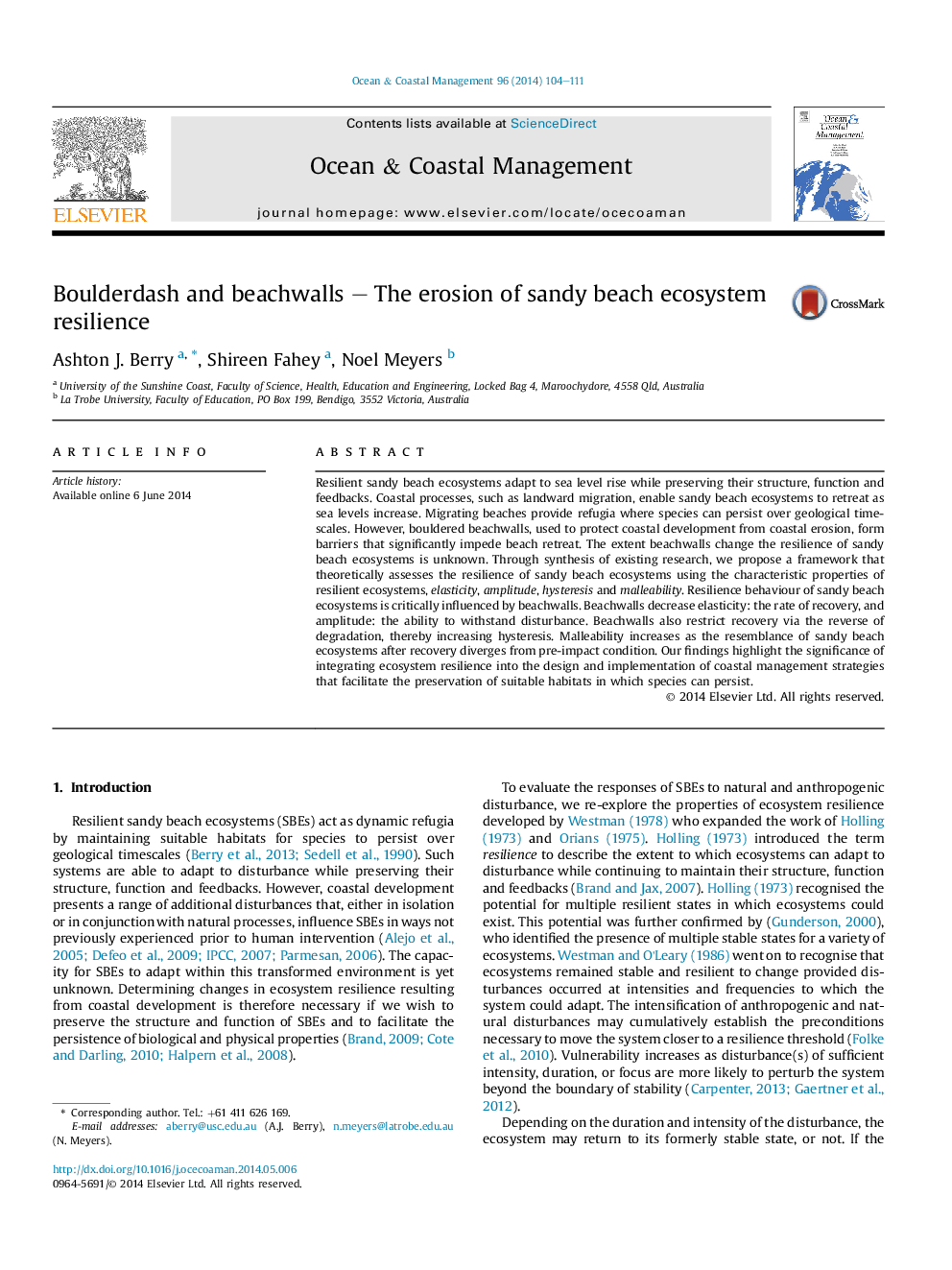| Article ID | Journal | Published Year | Pages | File Type |
|---|---|---|---|---|
| 1723688 | Ocean & Coastal Management | 2014 | 8 Pages |
•We examine the equilibrial and non-equilibrial responses of sandy beach ecosystems to disturbances, such as sea level rise.•We apply the characteristics of resilient ecosystems to sandy beach ecosystems.•We develop a theoretical framework to assess the resilience of sandy beach ecosystems to sea level rise.•We compare the resilience of sandy beach ecosystems to sea level rise with or without the addition of a beachwall.
Resilient sandy beach ecosystems adapt to sea level rise while preserving their structure, function and feedbacks. Coastal processes, such as landward migration, enable sandy beach ecosystems to retreat as sea levels increase. Migrating beaches provide refugia where species can persist over geological timescales. However, bouldered beachwalls, used to protect coastal development from coastal erosion, form barriers that significantly impede beach retreat. The extent beachwalls change the resilience of sandy beach ecosystems is unknown. Through synthesis of existing research, we propose a framework that theoretically assesses the resilience of sandy beach ecosystems using the characteristic properties of resilient ecosystems, elasticity, amplitude, hysteresis and malleability. Resilience behaviour of sandy beach ecosystems is critically influenced by beachwalls. Beachwalls decrease elasticity: the rate of recovery, and amplitude: the ability to withstand disturbance. Beachwalls also restrict recovery via the reverse of degradation, thereby increasing hysteresis. Malleability increases as the resemblance of sandy beach ecosystems after recovery diverges from pre-impact condition. Our findings highlight the significance of integrating ecosystem resilience into the design and implementation of coastal management strategies that facilitate the preservation of suitable habitats in which species can persist.
